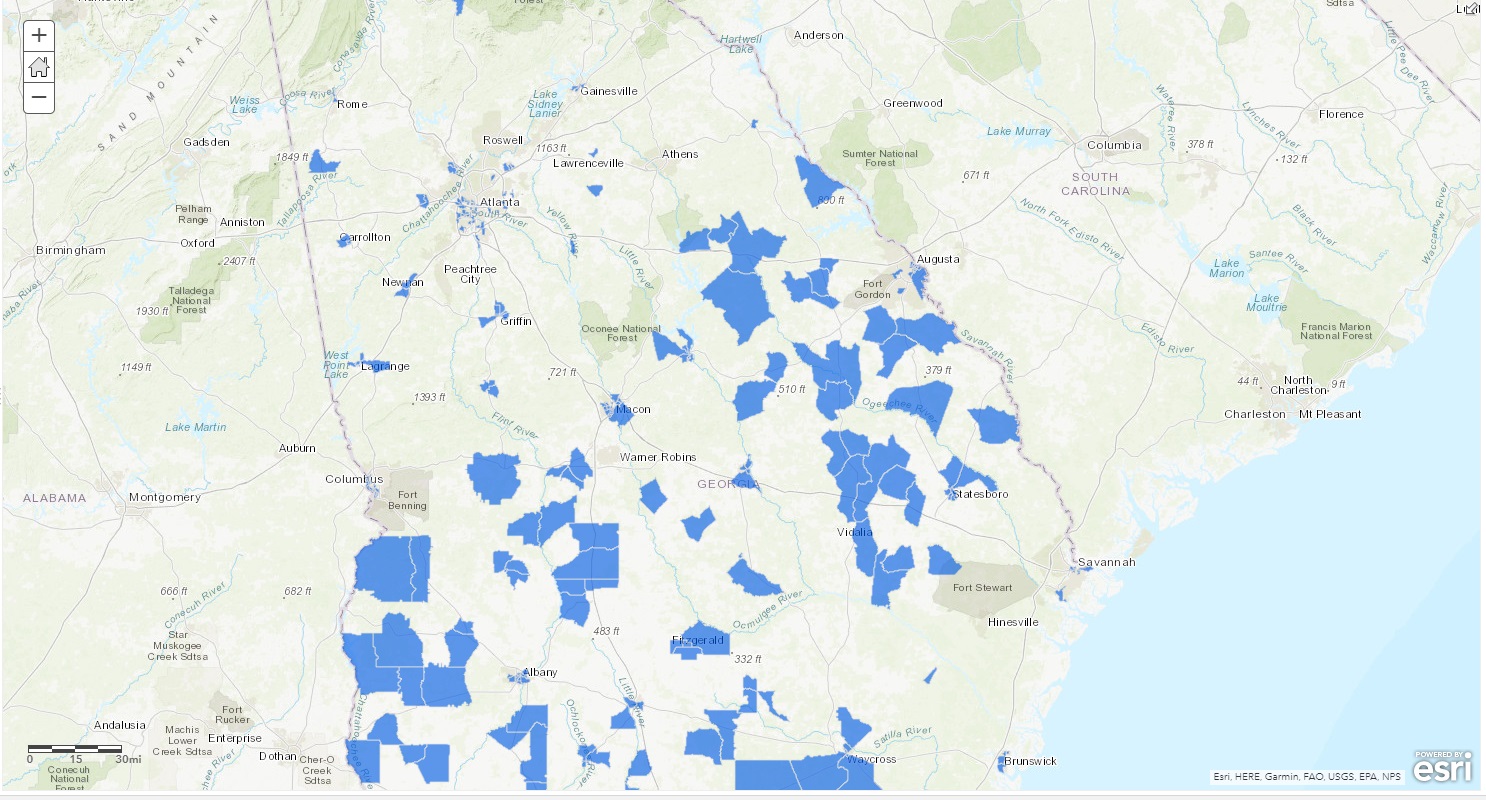Georgia’s ‘Opportunity Zones’ Include Gentrifying Atlanta Neighborhood

Georgia’s recently unveiled Opportunity Zones are strewn throughout the state.
Courtesy of Georgia
Georgia recently unveiled its 260 “Opportunity Zones” — designations included in a new federal program, aimed at spurring investment in struggling areas.
Investors who make a profit off stocks can get a tax break if they reinvest those gains in one of the zones. But one of the designations around Atlanta might not fit many people’s image of struggling.
It’s in a neighborhood called Edgewood on Atlanta’s eastside. On a rainy day, Eric Kronberg drives past some of the new development already in the zone.
He’s an architect, developer and longtime community volunteer who’s lived here for nearly 20 years. He’s watched the area come a long way.
“People talk about this intersection of Whitefoord and LaFrance how quickly it’s developed,” Kronberg said.
There are brand new apartments surrounding a MARTA station. Then he passes a home that sold for almost $900,000.
“Scott West was the architect,” Kronberg said. “He did a great job with the design, and I think it was $899.”
Kronberg is excited to see so many people wanting to live in the neighborhood and near MARTA.
But does Edgewood need tax incentives to attract even more interest?
“This is definitely an area that is gentrifying and is already getting a lot of investment,” said Brett Theodos of the Urban Institute.
Theodos has studied the Opportunity Zones that states have designated around the country, since the program was created under the new federal tax law.
He analyzed investment data and socioeconomic change in the zones to figure out whether they’re truly needy areas. He said many of Georgia’s were.
“It looks like Georgia on the whole did a reasonably good job of targeting their zones but not this one,” Theodos said.
Theodos developed a scale showing the level of investment in a zone, with 10 being the highest. The Edgewood census tract received a nine in that ranking.
Georgia’s Department of Community Affairs defended the designation, saying the zone still has a high poverty rate — more than 30 percent. The minimum for the program is 20 percent.
John Lettieri of the Economic Innovation Group, which helped develop the federal zones, said state leaders had to find a balance “between need and opportunity.”
He couldn’t comment specifically on this Atlanta zone but he said across the country he saw states designate areas that had a higher need than the program required.
“Based on the data we have nationally it’s pretty compelling that they’ve done that,” Lettieri said. “But of course in any national program there’s going to be hits and misses.”
Theodos did warn, however, that even if states did a good job on average, that doesn’t mean that money will reach the most deserving zones.
“It’s not like all of Georgia’s 260 selected census tracts have equal probability of receiving investment because of that selection,” he said.
As for Kronberg, he said he thinks an intown neighborhood like Edgewood qualified for the program because of his community’s efforts to preserve affordable housing.
The area still includes a 200-unit, low-income housing complex and other mixed-income developments.
And even if the neighborhood isn’t the most deserving, Kronberg said he thinks it could help bring more housing, which the city needs.
“Part of the challenge with redeveloping in urban areas is often that raising capital can be really hard,” he said.
Now Kronberg just hopes that investment comes with smart policies from state and local governments to ensure the area continues to have affordable units.
Georgia’s other Opportunity Zones are scattered across the state, mostly in rural areas.








